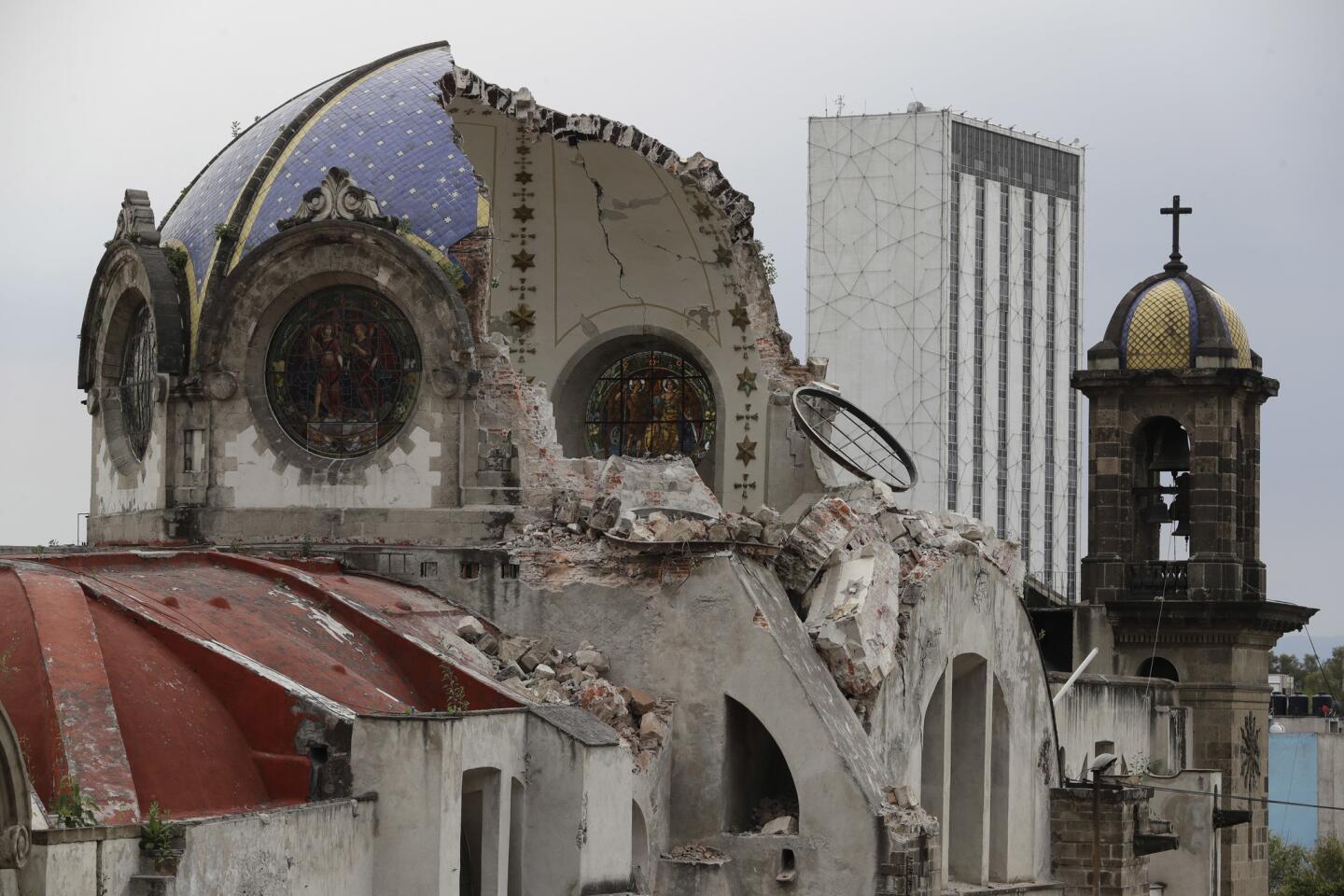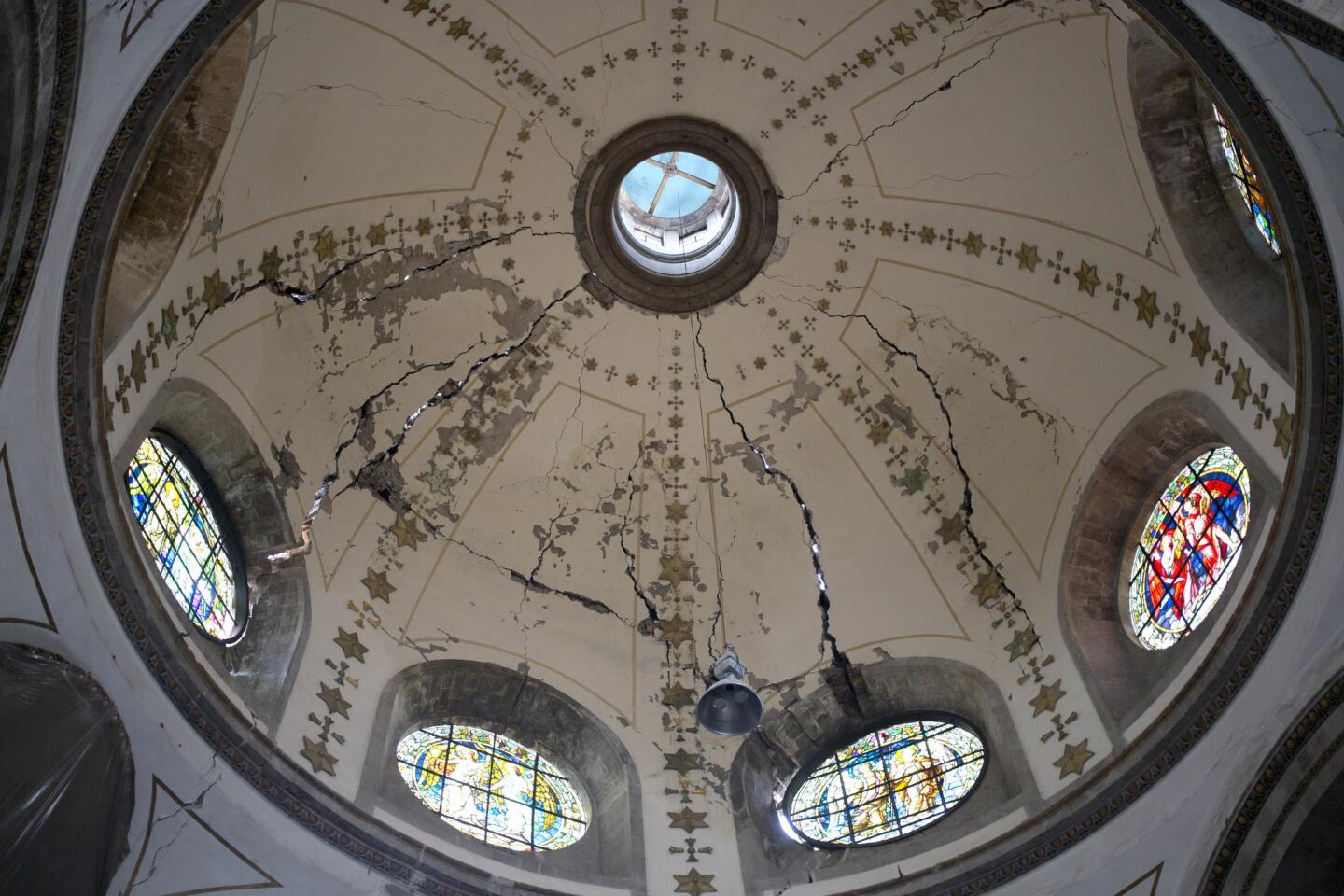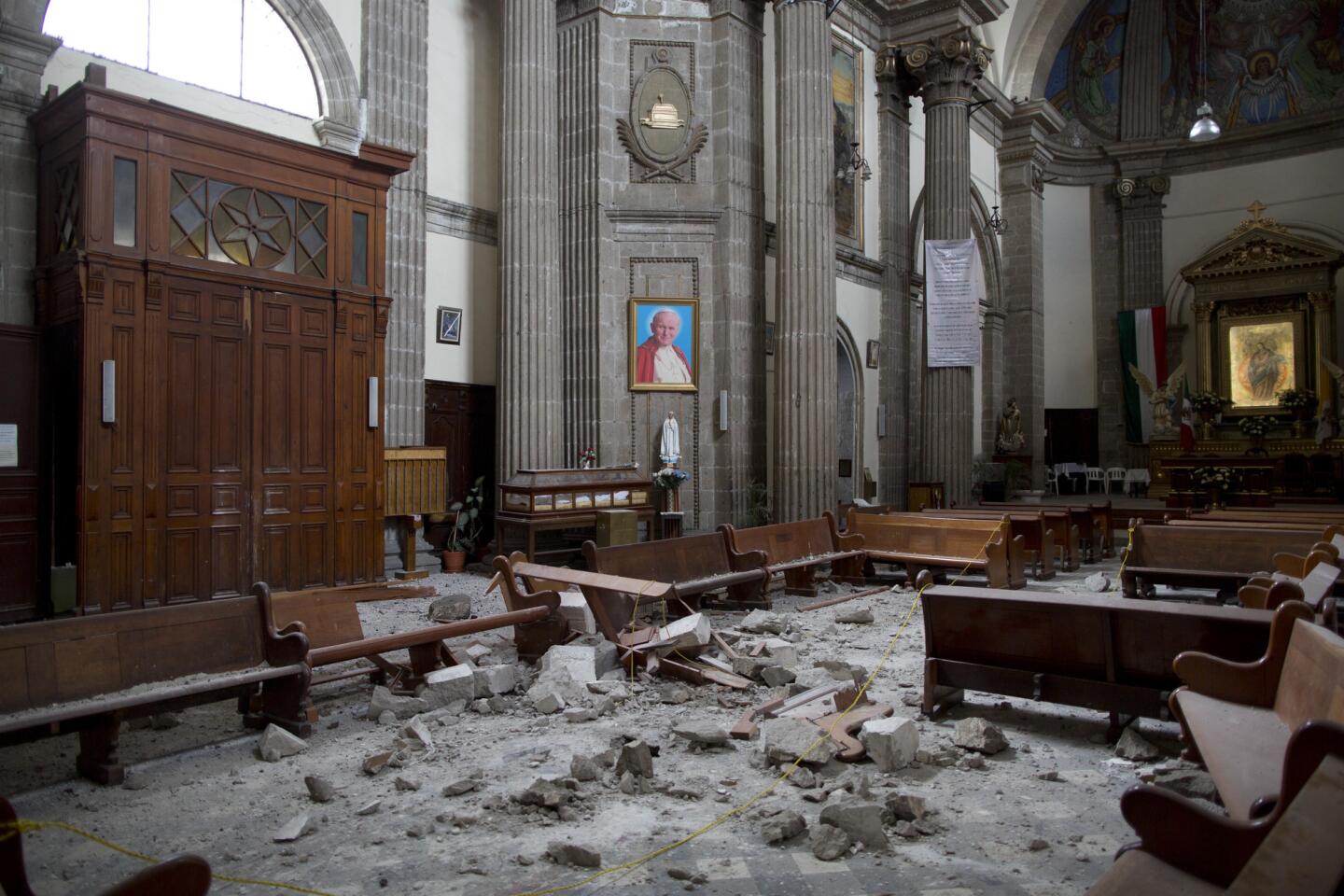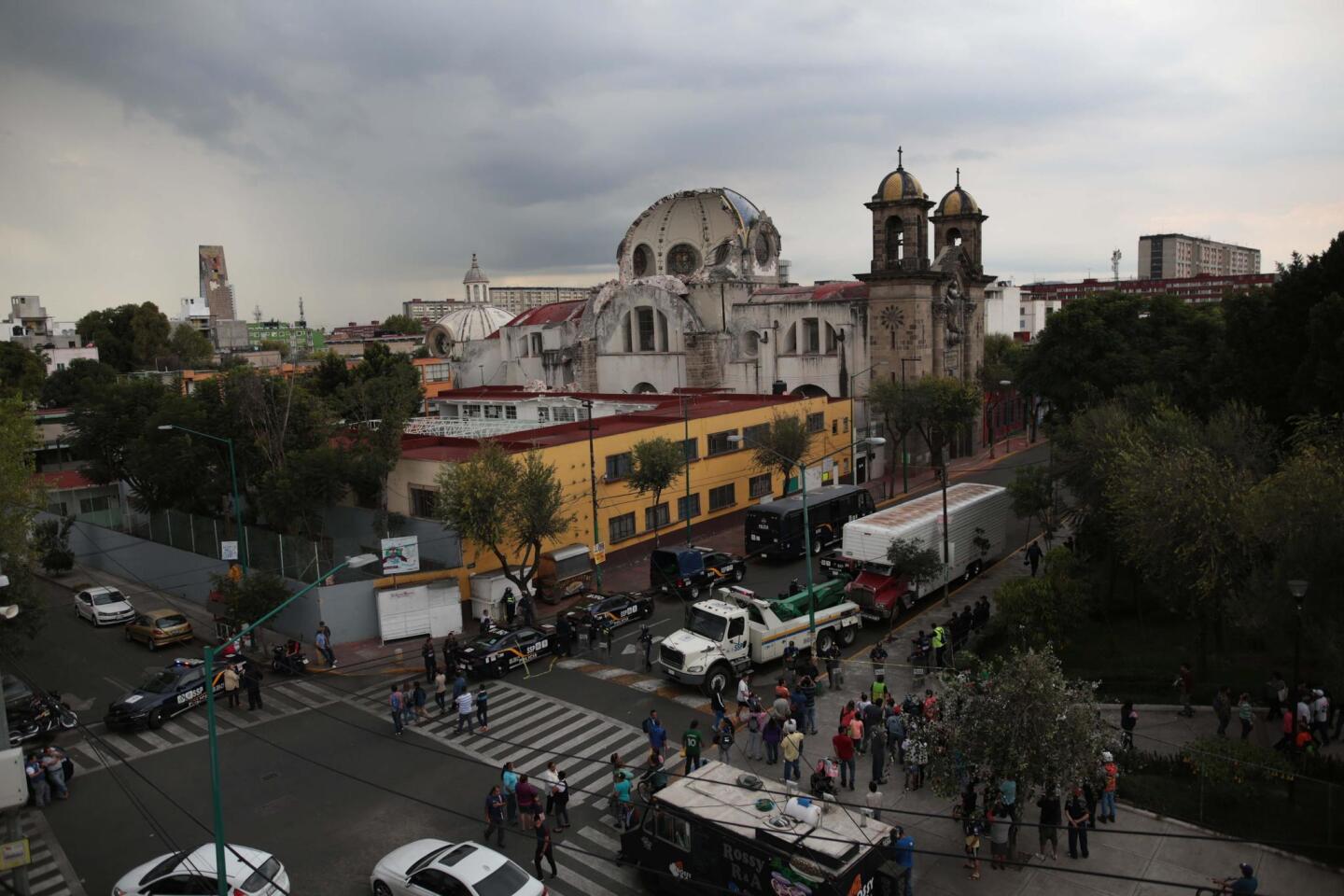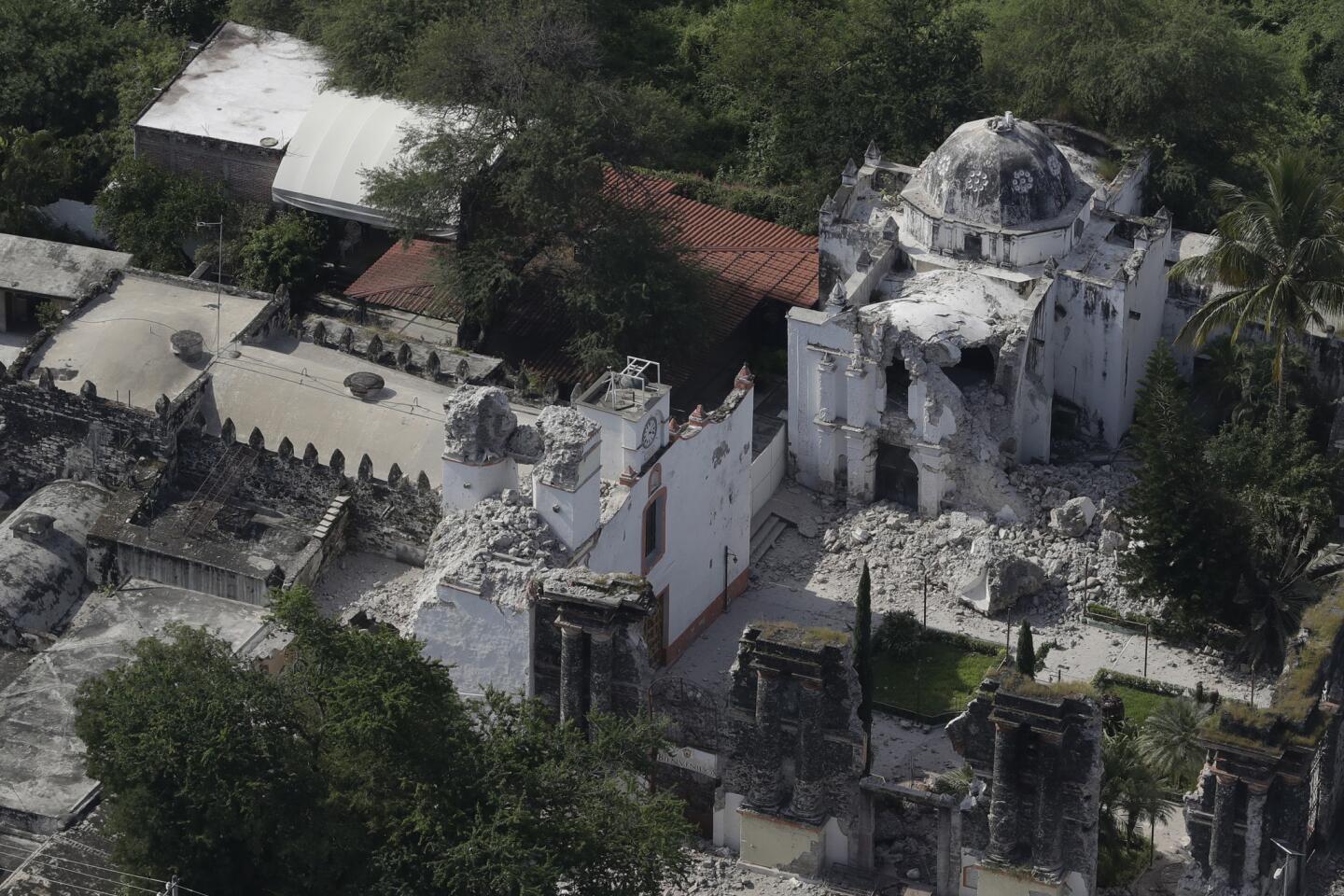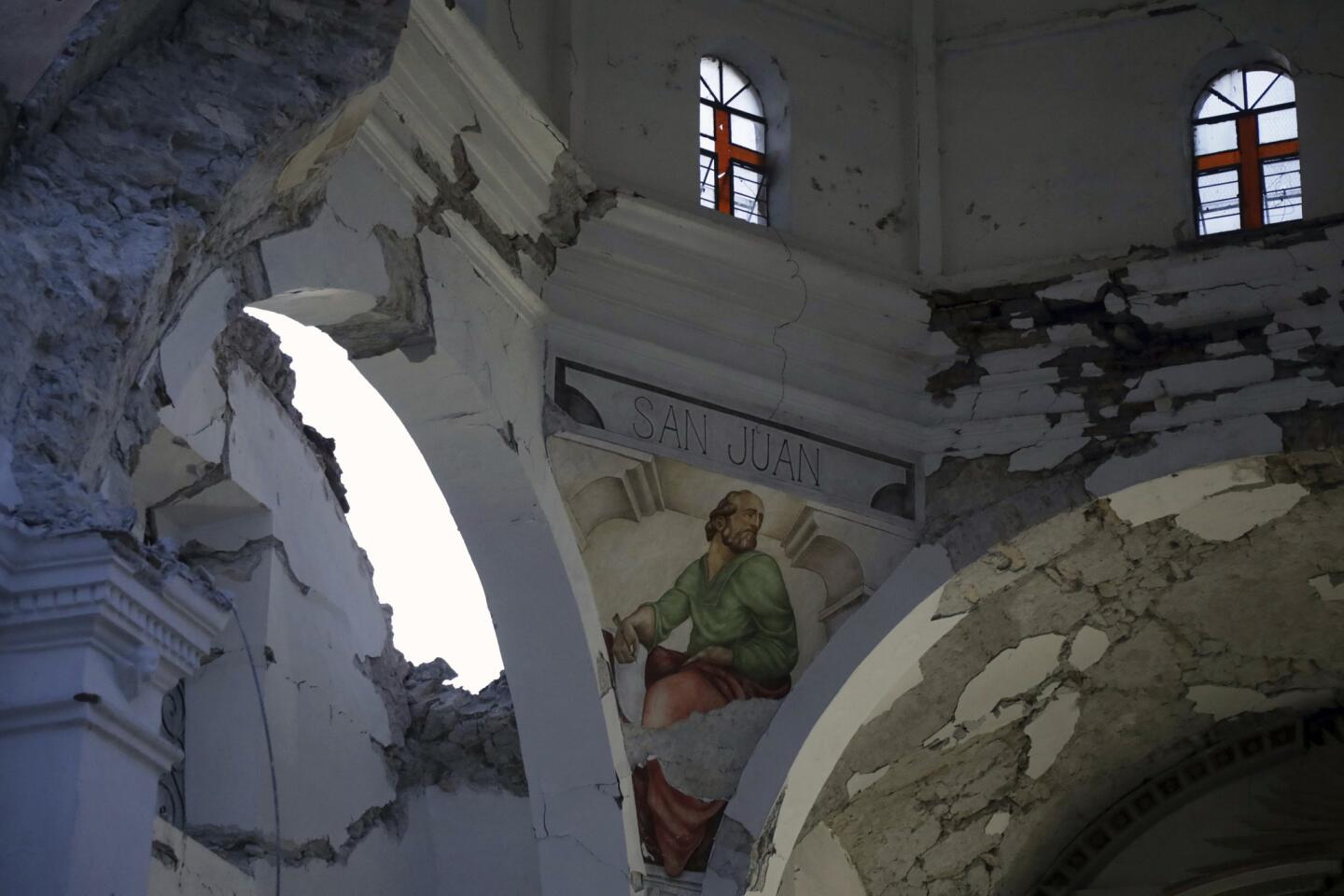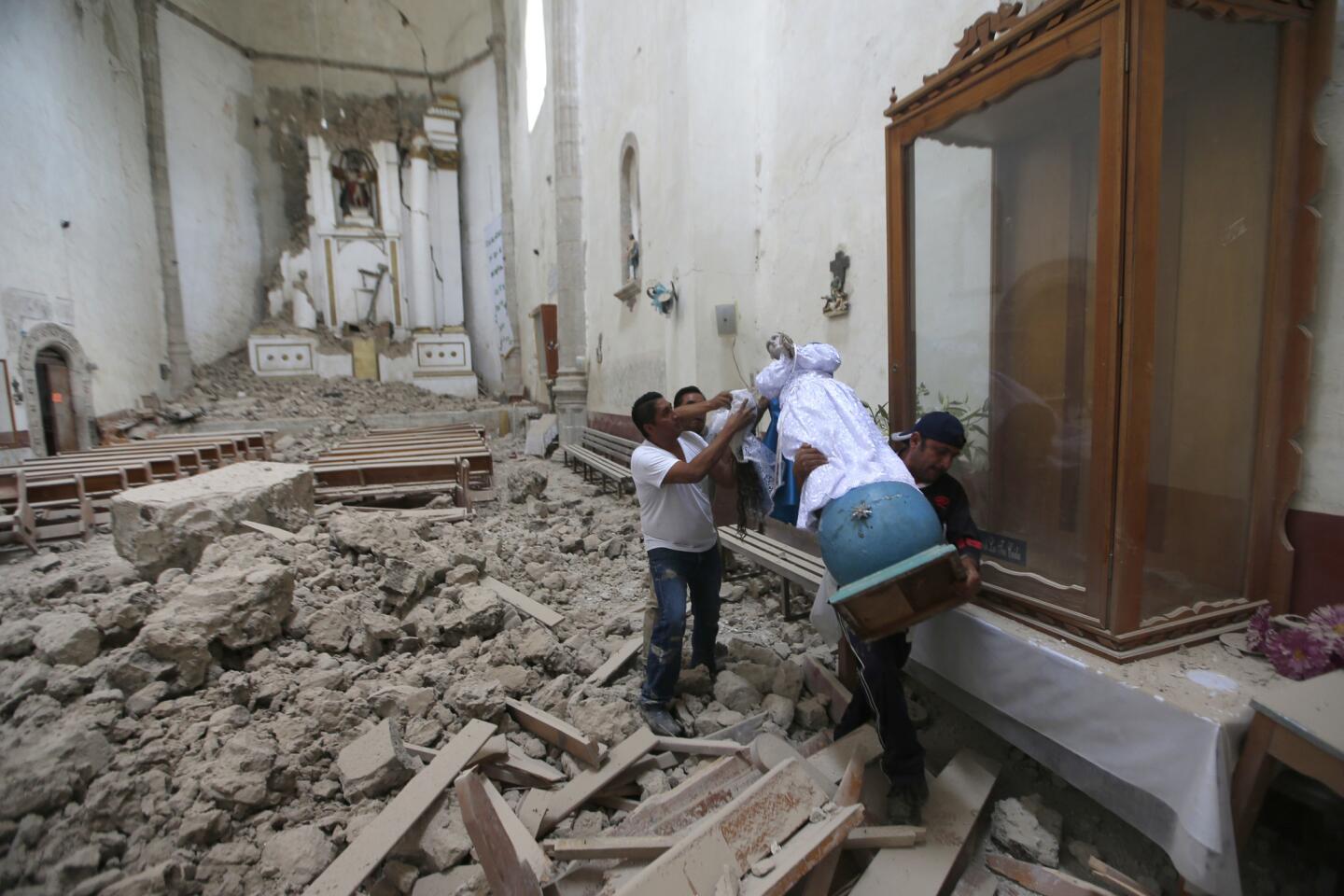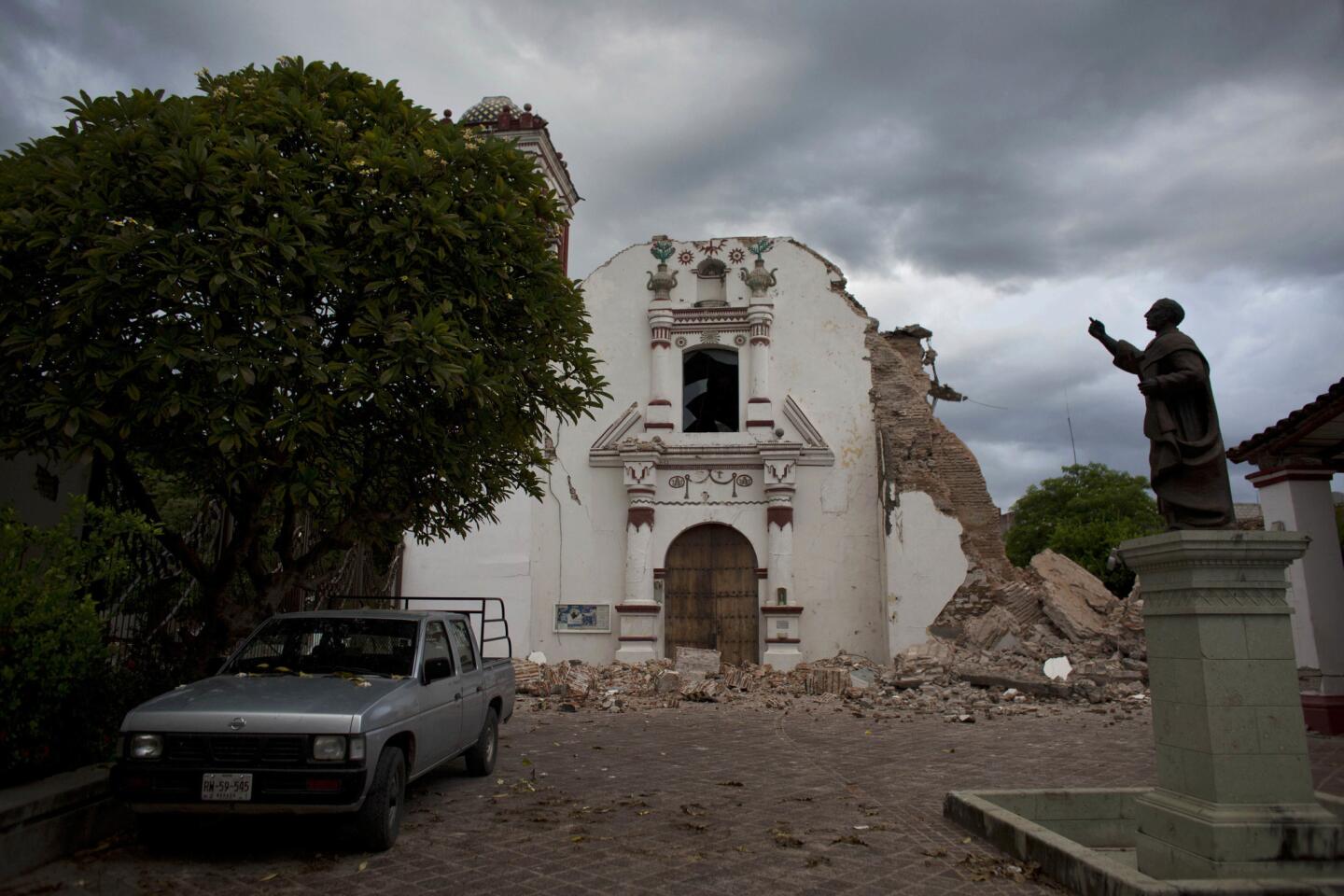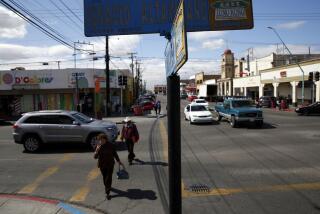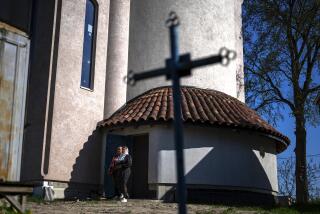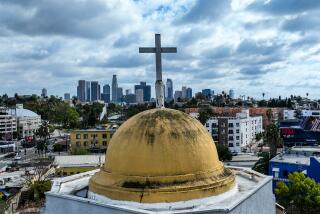2,000 historic buildings in Mexico damaged by earthquake
Reporting from Mexico City — From one side, Our Lady of Angels Church in Mexico City looks like it survived the Sept. 19 earthquake unscathed.
But from the opposite side, its large, blue cupola appears almost sliced in half, with deep fissures running up the part that remains. Chunks of rubble weighing at least a ton split from the structure, crushed the side of a public elementary school next door, while other debris covers broken wooden pews.
Years of deterioration from previous earthquakes had built up, and the magnitude 7.1 quake proved to be the final blow. The building’s scars deepened immediately, but the cupola, framed with several stained glass windows, didn’t fall until Sunday afternoon, hours after the final Mass. No one was hurt.
The next day, people gathered behind the police tape around the structure. Rosa Maria Quezada, 72, teared up as she hugged neighbors. She said she grew up in the neighborhood and has attended the church since she was a girl. The news pained her, but she took the timing of the collapse as a spiritual sign.
“God is great,” she said. “How good that it happened on a Sunday. Otherwise the children would have been at school.”
Officials from Mexico’s National Institute of Anthropology and History say almost 2,000 historic buildings were damaged in the earthquake, most of them churches. Other damaged structures include homes, schools, office buildings, libraries and hotels.
Most of the affected churches were in Puebla, including Our Lady of Remedies, atop the Grand Pyramid of Cholula, which lost two of its cupolas.
The Archdiocese of Puebla said 226 churches — nearly half the number located in the state — are damaged. The state of Mexico government said 136 churches are damaged, plus 92 churches in Mexico City, according to that area’s archdiocese. Twenty other churches were damaged in Morelos, according to its archdiocese. The Archdiocese of Oaxaca said 78 churches are damaged there, but officials are unclear which are due to a Sept. 7 earthquake and which are due to the earthquake last week.
Father Paulo Carvajal, spokesman for the Archdiocese of Puebla, said many of the state’s churches are colonial and that several suffered irreversible damage. He said he didn’t know how many would have to be demolished.
“It is a very unfortunate situation,” he said. “We are very hurt by everything that happened and are praying for all the people who continue in difficult situations at the moment.”
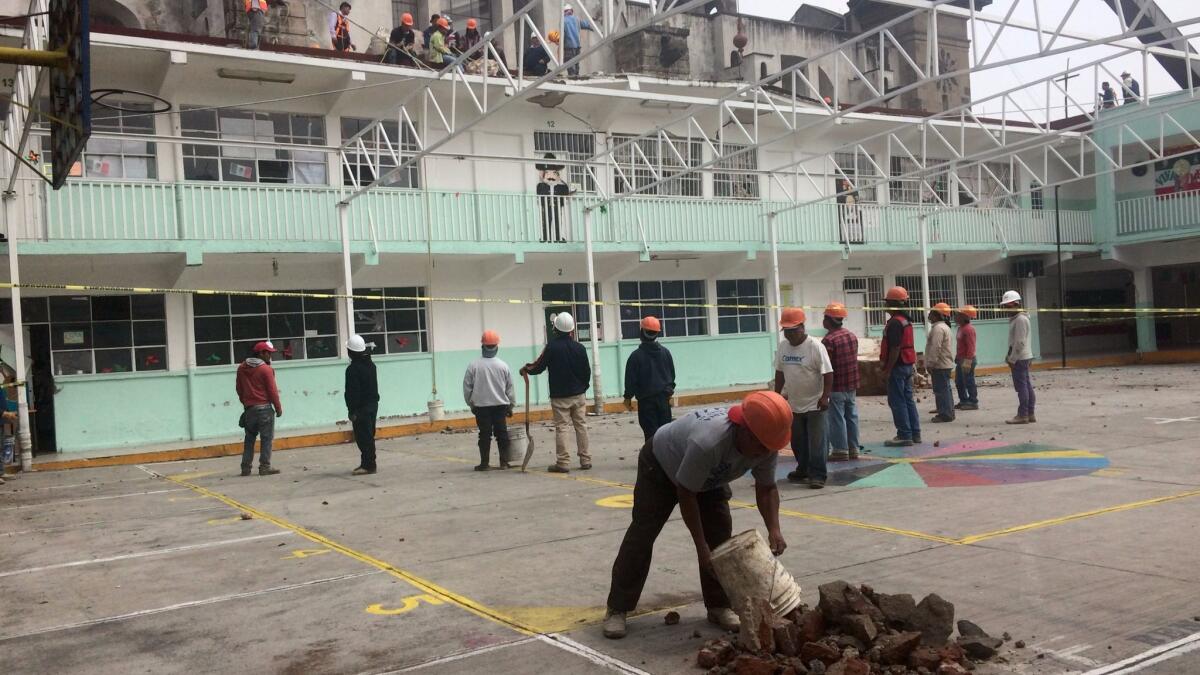
On Monday, architects at Our Lady of Angels began calculating how best to remove the rubble so they could preserve it for the church restoration, which could take years. Workers in hardhats tossed smaller pieces of rubble into a pile. They secured thick, red straps around a piece of the cupola that looked as tall as two men and then a crane guided it slowly to the ground.
Parish clerk Marco Antonio Fuentes said church leaders, worried that it could collapse, held Sunday Mass at a park across the street. They plan to do the same this coming Sunday.
“We will continue celebrating, even if it’s outside,” he said.
Our Lady of Angels, just north of the city center, has an origin story going back to 1580, when an oil painting of the Virgin Mary transported by a Spanish ship arrived water-damaged. An indigenous painter created a replica on a chapel with adobe walls. The present church was built in 1808.
The painting of the Virgin Mary is protected by a glass case and was unharmed when the cupola fell.
Many people in this deeply Roman Catholic country look to churches for hope and strength, making their destruction during an already difficult time particularly painful. Gabriel Montiel, a lawyer from Michoacan, moved up some business meetings so that he could stop by the church Tuesday to pay his respects. He said he grew up poor and started working at the church as an altar boy at age 8. He credits the church for his success.
“This is an icon of the neighborhood,” he said. “I see it and I don’t even know what to say.”
Castillo is a staff writer. Sanchez is a member of The Times’ Mexico City bureau.
More to Read
Sign up for Essential California
The most important California stories and recommendations in your inbox every morning.
You may occasionally receive promotional content from the Los Angeles Times.
